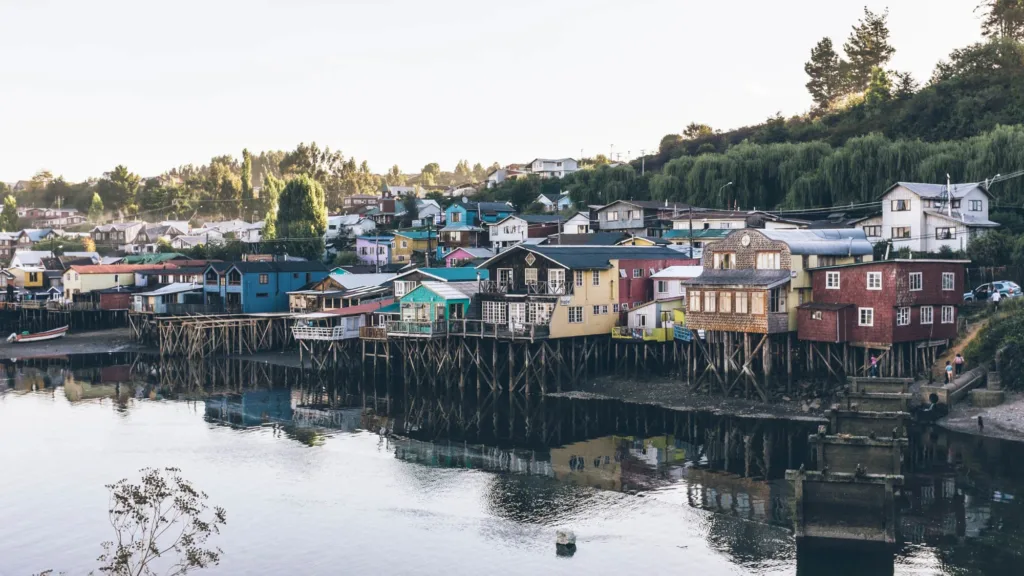Castro
Castro is the capital city of the Chiloé Province in the Los Lagos Region. Castro is the largest town on Chiloé Island and holds the distinction of being the oldest as well, founded in 1567.
In 1567, Chile’s conquistador and royal governor, Martín Ruiz de Gamboa, established a settlement on the serene estuary to serve as a base for conquering the island’s Huilliche people.
What is Chiloé Island known for?
The town has gained renown for its picturesque shingle-roofed palafitos, and charming waterfront stilt houses that lend it a far more appealing atmosphere than the one perceived by a young Charles Darwin when he passed through in 1835
Brief History of Castro
The region encompassing Chiloé Island, which includes present-day Castro, was initially populated by the Huilliche people, a subgroup of the indigenous Mapuche group.
The arrival of Spanish explorers and settlers in the 16th century marked a significant turning point in the region’s history. The Spanish established settlements and introduced Christianity, influencing the local way of life. The wooden churches, for which Chiloé is famous, were built during this period.
Castro was officially founded on February 12, 1567, by the Spanish explorer Martín Ruiz de Gamboa. It became an important administrative and economic centre for the Spanish colonial authorities.
In the early 19th century, Chiloé Island played a role in the Chiloé Uprising (Insurrección de Chiloé) against Spanish rule. Local leaders, such as Antonio Quintín, led the resistance against the Spanish authorities. Eventually, in 1826, Chiloé Island became a part of independent Chile.

Colonial fort system
During the colonial period, the charming coastal town of Castro, Chile, stood guard over the Pacific waters with a trio of fortifications:
- Fuerte de Castro
- Batería marítima de Castro
- Fortín de Tauco.
The last fortification is not located in Castro proper but a few kilometres south along Estero de Castro. Only the remnants of Fortín de Tauco can be found at present, there are no known vestiges of the two fortifications that were located in what is now the city of Castro.
Castro Sports
Chiloé has a rich cultural heritage, and there might be traditional sports or games unique to the region that residents participate in during festivals or special events.
Castro boasts a significant presence in basketball. The city is proud to host Deportes Castro, the 2012 champions of the Liga Nacional de Básquetbol de Chile, Chilean National Basketball League. This basketball team contributes to the local sports culture, and residents have the opportunity to support them during home games held at the Gimnasio Fiscal de Castro.
Transport Connections
The city can be reached by land via Route 5. From Castro, nearly every village in Chiloé is easily reachable through well-maintained paved roads. There are efficient bus connections to most of the villages, and the bus terminal is conveniently located near the central town square.
Castro is connected to the Pan-American Highway, allowing for road travel to other parts of Chiloé Island and mainland Chile.
To reach Chiloé Island by road, travellers often take a ferry across the Chacao Channel. The ferry connects the town of Pargua on the mainland to Chacao on Chiloé Island. From there, one can drive to Castro.
Castro, Mocopulli Airport serves the Chiloé region. It offers domestic flights to and from Santiago, the capital of Chile. From November 2012, domestic flights linking the island to the rest of the country operate four times a week, arriving at Mocopulli Airport.


